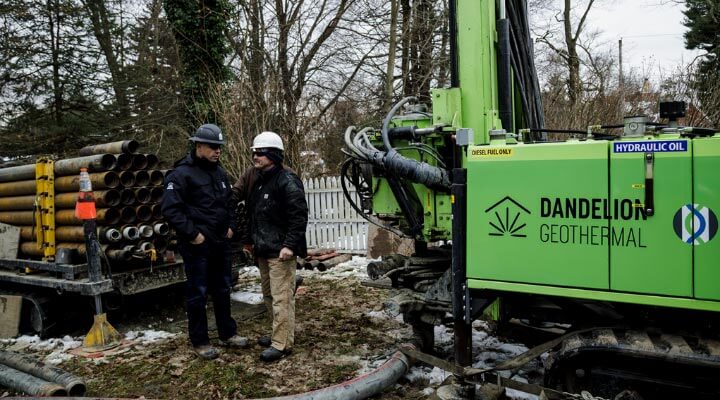All geothermal systems use ground loops to capture the consistent temperature of the earth to provide heating and cooling. There are several different approaches to ground loop design, but they all fall under two basic categories: closed loop and open loop.
While every ground loop serves the same function, there are pros and cons to each design. In this post we’ll explore your options so you can find the right geothermal heating and cooling solution for your home.
What’s a Closed Loop Geothermal System?
A closed loop geothermal system continuously circulates a heat transfer solution through buried or submerged plastic pipes. The loop is filled just once and requires only a moderate amount of solution. The same solution is used again and again in a closed loop! These underground pipes connect to an indoor heat pump to provide heating and cooling.
For more information of the different ways of designing closed loop systems check out our detailed guide to geothermal ground loop systems.
What’s an Open Loop Geothermal System?
An open loop geothermal system pipes clean ground water directly from a nearby aquifer to an indoor geothermal heat pump. After the water leaves the home, it’s expelled back through a discharge well, which is located a suitable distance from the first. The water may also be directed into a local pond or approved drainage ditch, depending on local codes.
Because open-loop systems utilize water on a “once through” basis, they are often referred to as “pump and dump” systems.
Which is Better: Closed Loop or Open Loop Geothermal Systems?
Cost:
Because open loop systems require no trenching, drilling, or burying hundreds of feet of plastic pipe, open loop systems are the simplest and often cheapest type of geothermal to install.
Those costs are unavoidable when installing any closed loop geothermal system.
Feasibility:
Open loop geothermal systems are only an option if there’s a plentiful supply of clean, fresh water on-site. This water source must also meet the geothermal system’s gallons-per-flow requirements, even through seasonal changes.
Closed loop geothermal systems are practical for small and spacious properties alike and don’t rely on any nearby water source to heat and cool properties.
Durability:
The performance of an open loop system may degrade over time if water quality issues like silt, sediment or high mineral content are present or if the water supply diminishes for any reason.
Closed loop geothermal ground loops can last 50+ years — even up to 100 years with little to no maintenance. Once installed, the buried ground loop will be a permanent fixture on the property for as long as there is a building to heat and cool.
Environmental Concerns:
Open loop systems can stir up silt and sediment that can affect domestic water aquifers for homeowners that rely on well water. Additionally, for fear of environmental contamination or disturbance, some municipalities don’t allow open loop systems at all.
Closed loop geothermal systems circulate a mixture of water and a small amount of antifreeze. Dandelion’s mixture is just 22% propylene glycol, a non-toxic, food grade antifreeze. Once installed, closed loop systems exchange heat with the ground without putting anything into the earth or taking anything out of it.
